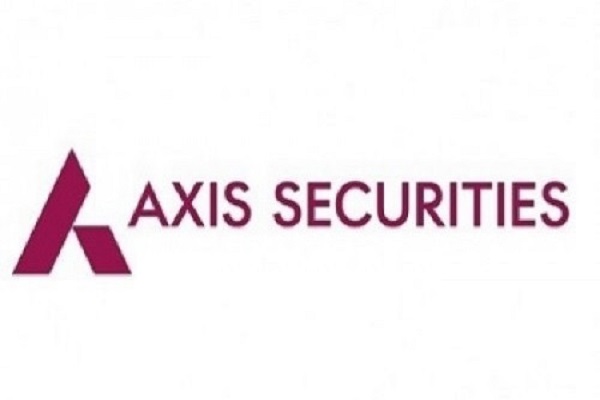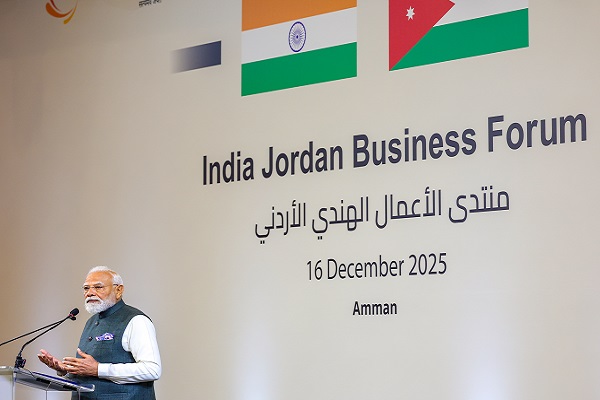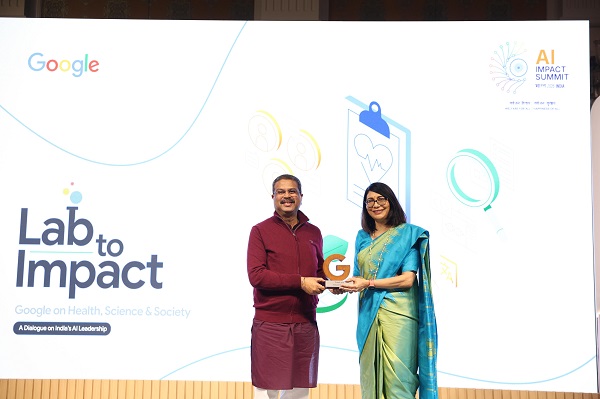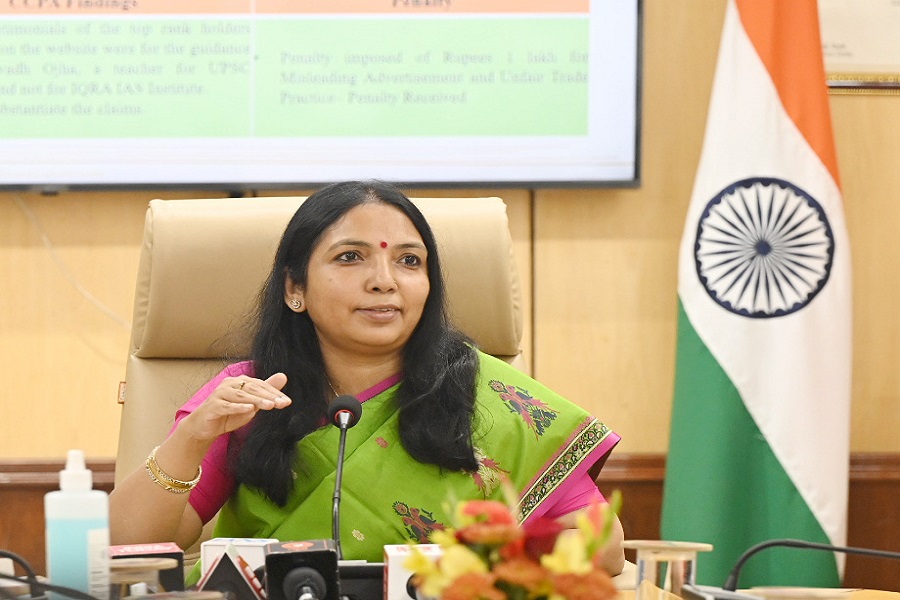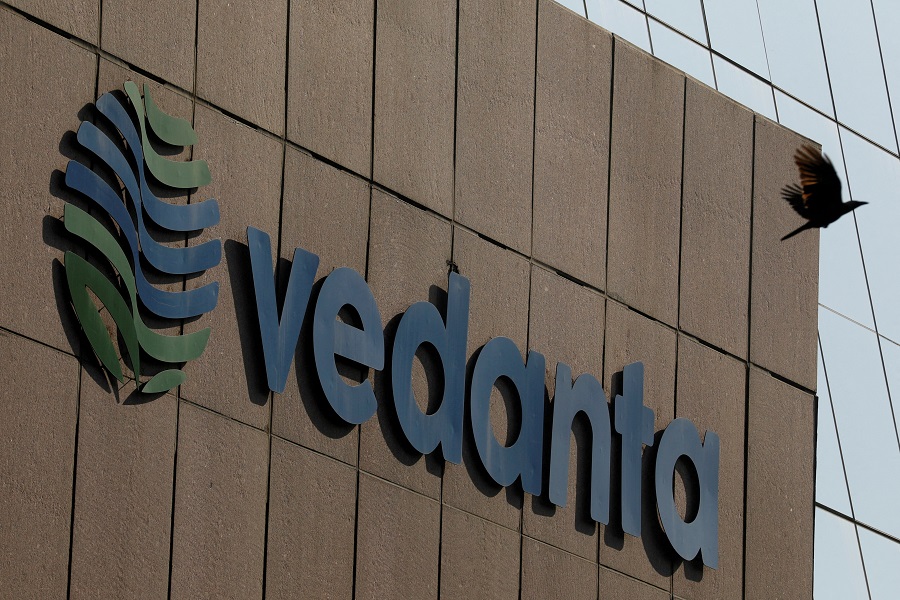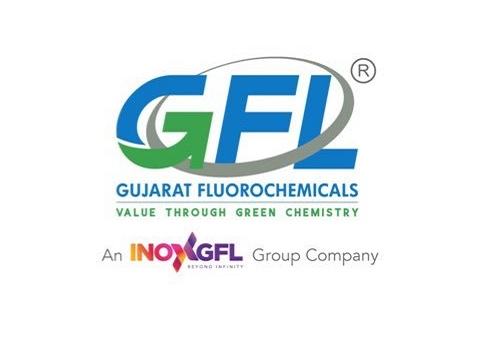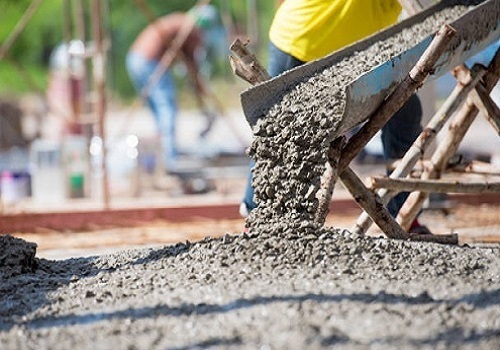Top Conviction Ideas: Chemicals Sector: Q2FY26 Review by Axis Securities Ltd

* Resilient Performance Amidst Continued External Challenges
* Resilient Performance Despite Tariff Uncertainty and China Overcapacity: The chemicals sector delivered a mixed performance in Q2FY26, with most companies reporting results that were either in line with or ahead of expectations, despite ongoing macro and industry-specific challenges such as tariffrelated uncertainty, Chinese overcapacity, weak downstream demand, and subdued pricing across several value chains. Revenue improvement was primarily volume-led, while EBITDA growth benefited from operating leverage. Softer input costs—particularly crude-linked intermediates and petrochemical derivatives—supported gross margin expansion. Select segments, including refrigerant gases, fluoropolymers, and a few agrochemical categories, saw improving demand trends. However, exporters continued to flag uncertainty owing to U.S. tariff actions, which may constrain near-term performance, although medium-term growth ambitions remain unchanged as capex plans proceed as scheduled. Excess capacity in China continues to pressure spreads across commodity chemicals. Within agrochemicals, global players outperformed domestic peers as channel inventory normalised, while heavy rainfall in key Indian states caused crop damage and drove elevated sales returns. Industry volumes in crop protection remained down in high single digits. Nonetheless, with Rabi sowing expected to progress well, demand is poised for improvement in H2FY26.
* Chemistry Plays: Companies with diversified product portfolios and strong innovation pipelines demonstrated better performance relative to the broader sector. Management commentaries highlighted a shift towards agility—adapting product lines and strategy to evolving end-market trends rather than relying solely on demand recovery. Discretionary sub-segments such as dyes, pigments, and polymers remained stable. Fluorochemicals and refrigerants continued to outperform, driven by robust R32 volumes and stronger pricing in R22. Domestic agrochemicals, however, remained weak due to the prolonged monsoon and weather-related disruptions.
* Outlook & Guidance: Global demand conditions remain uncertain, particularly due to potential direct and indirect effects of U.S. tariff regimes. Nonetheless, the medium-term sector outlook remains constructive, with companies maintaining their capex guidance to capture opportunities from global supply-chain diversification (China/Europe +1). Strategic focus continues launching new products, expanding into adjacent chemistry value chains, and enhancing margins through value-added offerings. Region-specific tariff structures are likely to influence cost competitiveness and may catalyse a realignment of global supply chains. While Indian exporters may experience near-term pressure, a stronger recovery is expected once clarity on global tariff frameworks emerges and customers reset sourcing patterns. Going forward, sector performance will hinge on companies’ ability to differentiate technologically, move up the value chain, and maintain cost efficiency.
*Financial Performance: Chemicals
* Dhanuka Agritech’s performance was impacted by the extended monsoon season as it reported revenue of Rs 598 Cr, down 9% YoY but up 13% QoQ, missing our estimate of Rs 687 Cr. Management highlighted that higher sales returns and a temporary halt in biostimulant sales (~Rs 20 Cr impact) weighed on Q2 performance. The company expects to soon receive clearance of existing bio-stimulant products as per the new government guidelines. EBITDA came in at Rs 137 Cr, down 14% YoY but increased 64% QoQ, with improved EBITDA margins of 22.9% driven by better operating performance. Given the continuation of monsoon in October, the company revised its full-year revenue guidance downward, expecting flattish revenue growth for FY26 (vs. earlier double-digit guidance).
* PI Industries’ performance remains muted owing to the extended monsoon and tepid demand in exports. Consolidated revenue stood at Rs 1,872 Cr was down 16% YoY but above our estimates (Rs 1,755 Cr), indicating business resilience despite challenges. Erratic and excessive rainfall impacted sales and led to higher inventory levels. Furthermore, regulatory changes in the biologicals segment weighed on growth momentum. Gross margin expanded to 57.3%, and EBITDA came in at Rs 541 Cr, down 14% YoY, with margins improving to 28.9%. The management expects a modest recovery in the global agrochemical market by Q4FY25, with normalization anticipated from the second half of CY26. Domestic prospects remain encouraging for H2FY26, supported by adequate reservoir levels post-monsoon and improved acreage for rice and corn, indicating a favourable Rabi season.
* Navin Fluorine International Ltd (NFIL) continued to deliver better than expected performance as revenue came in at Rs 758 Cr, registering a 46% increase YoY and 5% QoQ, beating our estimates by 6%. The revenue growth was driven by strong performance across all sectors and a notable margin expansion. EBITDA rose sharply to Rs 246 Cr, marking a robust 129% YoY and 19% QoQ growth, surpassing the estimate of Rs 177 Cr. EBITDA margins expanded significantly to 32.5% vs 20.7% in Q2FY25 and 28.5% in Q1FY26, led by operating leverage and improved product mix. The company continues to progress well on capacity expansions, which are expected to continue driving revenue growth over the medium term. The company’s strong order book signals healthy revenue visibility in the medium term. The management also reiterated its confidence in maintaining EBITDA margins above 25% in the medium term, while targeting to remain in the ~30% range.
* Aarti Industries Ltd.’s performance exceeded expectations across all parameters. Revenue stood at Rs 2,100 Cr, up 29% YoY and 25% QoQ, surpassing estimates by 16%. The revenue growth was driven by higher volumes—particularly in the MMA business—and the recognition of bulk shipments deferred from Q1. EBITDA came in at Rs 291 Cr, up 48% YoY and 37% QoQ, beating estimates by 21%. EBITDA margin improved to 13.9%, compared to 12% in Q2FY25 and 12.7% in Q1FY26. PAT stood at Rs 106 Cr, significantly up 112% YoY and 147% QoQ, driven by improved operating leverage and the impact of exceptional items. The company continues to strengthen its presence across Europe, the Middle East, and Africa, while refining its US market strategy to maintain long-term competitiveness. Going forward, it intends to execute its growth strategy in a measured and disciplined manner, with planned capex of less than Rs 1,000 Cr for FY26. The company continues to target an annual EBITDA range of Rs 1,800–2,200 Cr by FY28.
* Apcotex Industries reported revenue of Rs 337 Cr, down 4% YoY and 10% QoQ, missing our estimates by 14%. The company continued to focus on volume growth, with an 11% YoY increase in volumes. The revenues declined despite the volume growth, as low raw material costs resulted in lower finished goods. The company, however, achieved EBITDA of Rs 41 Cr, reflecting a growth of 48% YoY and 5% QoQ, largely in line with our estimates of Rs 42 Cr. EBITDA margins stood at 12.1%, improving 423 bps YoY and 179 bps QoQ. The management expects utilisation levels and margins to improve further in the coming quarters, driven by newly announced capacity and a higher export mix.
* Archean Chemical Industries’ consolidated revenue stood at Rs 233 Cr, a decline of 3% YoY and 20% QoQ, missing our estimate by 34%. The company continued to face challenges driven by persistent macroeconomic pressures, supply chain disruptions, and geopolitical uncertainties. The extended monsoon worsened the challenges caused by macro headwinds, delaying the potential recovery. EBITDA stood at Rs 63 Cr, down 16% YoY and 20% QoQ, falling short of our estimates by 38%. The EBITDA margin decreased to 26.9%, a drop of 423 bps YoY. While the volumes during the quarter were impacted by adverse weather, the management expressed confidence in achieving bromine and salt volumes closer to the earlier guided range for the full year. The company is expected to continue witnessing industry-level headwinds in the near term, with meaningful contributions from the newer businesses expected in FY27.
* Camlin Fine Sciences’ reported revenue of Rs 460 Cr in Q2FY26, up 9% YoY and QoQ, broadly in line with our estimate of Rs 448 Cr. The Blends division reported a healthy performance across major markets, led by strong traction in the CFS Vitafor portfolio. Vanillin revenues grew 41% QoQ, driven by a strong 35% increase in volumes, while realisations remained under pressure. EBITDA stood at Rs 33 Cr, down 23% YoY but up 76% QoQ, below our estimate of Rs 42 Cr due to higher-thanexpected employee and other expenses. EBITDA margin contracted 296 bps YoY but improved 277 bps QoQ to 7.3%. The company reported a net loss of Rs 14 Cr after accounting for discontinued operations. Management reiterated confidence in achieving 20% annual growth in the Blends business, projecting FY26 revenue in the range of Rs 2,000–2,100 Cr. EBITDA margins are expected to expand meaningfully in the coming quarters, supported by operating leverage and improved efficiencies.
* NOCIL’s performance continued to be impacted by aggressive dumping by foreign players and global uncertainties. The company reported revenue of Rs 321 Cr, down 12% YoY and 5% QoQ, broadly in line with expectations. EBITDA stood at Rs 22 Cr, declining 41% YoY and 27% QoQ, missing estimates by 23%. EBITDA margin compressed to 7.0% versus 10.4% in Q2FY25. PAT came in at Rs 12 Cr, down 71% YoY and 30% QoQ, compared to expectations of Rs 15 Cr. The company is expected to focus on pricing discipline, product mix optimization, and cost control to limit margin dilution in the absence of a clear recovery. While the management maintains a positive outlook on growth prospects with demand recovery in key sectors, uncertainties are expected to prevail in the near term.
? Near-Term Weakness Continues, but Structural Growth Outlook Remains Intact
FY25 remained a difficult period for the chemical sector, and the softness has extended into H1FY26, driven by muted global demand, macroeconomic weakness across key geographies, prolonged inventory destocking, excess Chinese supply, and ongoing concerns around further slowdown in end-market consumption. While near-term challenges persist, most of these pressures are expected to ease gradually over the coming quarters. The sector’s medium- to long-term fundamentals remain strong, underpinned by expanding export prospects and steady domestic demand.
* Chemicals: Companies under our coverage are prioritizing operational discipline and innovation to navigate this transition phase as global supply chains continue to reorganize. Players are compelled to strike a balance between pricing and volume growth to safeguard margins, selectively participating in segments with sustainable profitability while accelerating cost-efficiency programs. Although commentary indicates early signs of price stabilisation, uncertainty related to U.S. tariff policies continues to cloud near-term visibility. Nevertheless, we believe the structural growth narrative for Indian chemicals remains unchanged. Firms that sustain cost discipline and enhance operational efficiency are well-positioned to benefit as demand recovers. We maintain a cautiously optimistic stance on a gradual improvement in H2FY26.
* Agrochemicals: Irregular and uneven monsoon rainfall across major crop-producing regions weighed heavily on agrochemical consumption, with excessive rainfall in August and September causing crop losses and limiting product application. However, improved reservoir levels and healthier soil moisture conditions set a favourable backdrop for the upcoming rabi season. Global agrochemical players outperformed domestic peers, and channel inventories are showing signs of normalisation. Elevated water storage levels are likely to drive stronger demand for fertilisers and agri inputs as acreage expands. Additionally, revisions in Rabi fertilizer subsidies remain aligned with prevailing raw material costs, alleviating margin-related concerns. We continue to believe that companies investing in R&D, enhancing differentiated product portfolios, and entering strategic partnerships are better positioned to capture demand recovery and deliver sustainable margin gains.
For More Axis Securities Disclaimer https://simplehai.axisdirect.in/disclaimer-home
SEBI Registration number is INZ000161633
